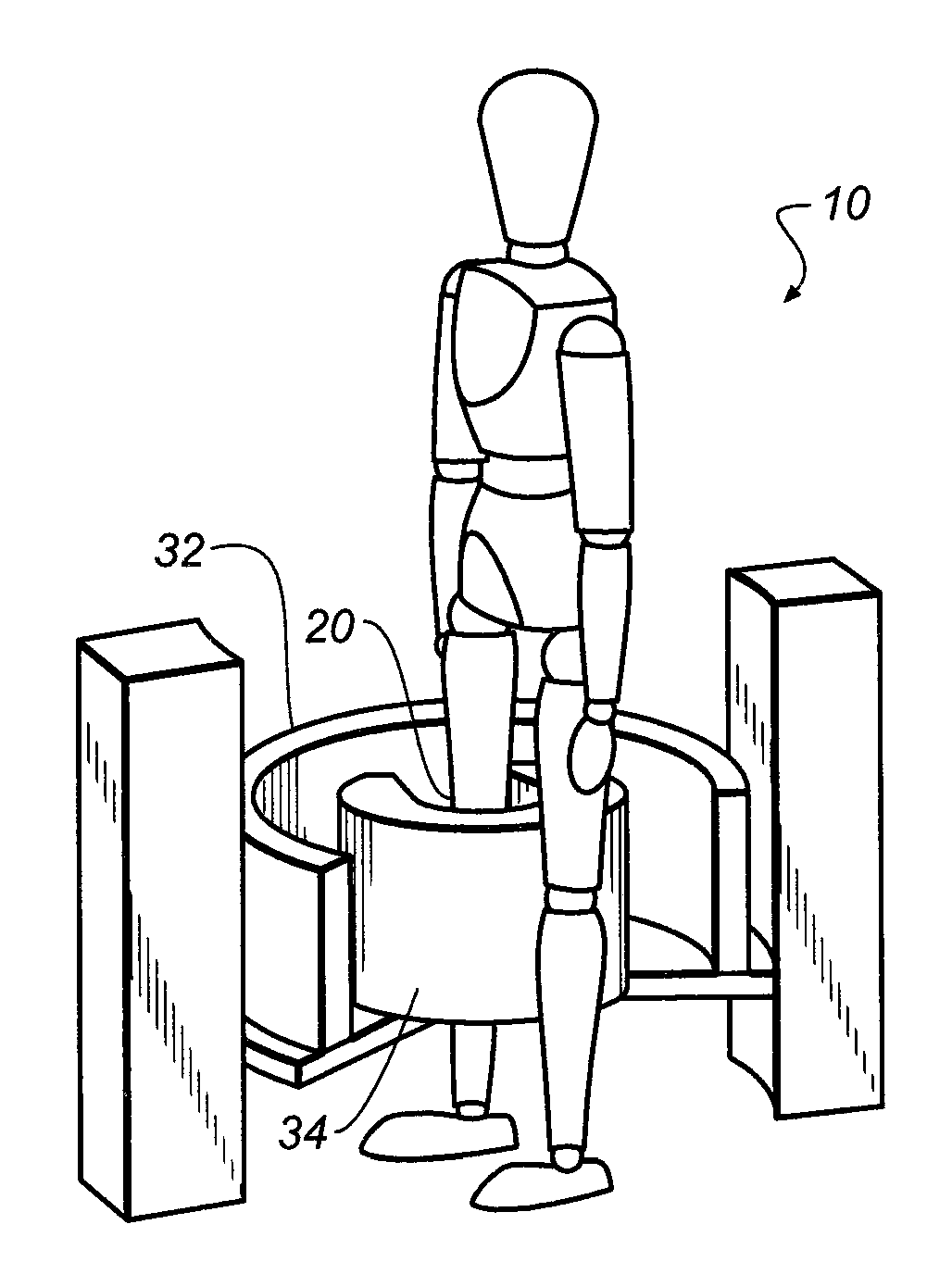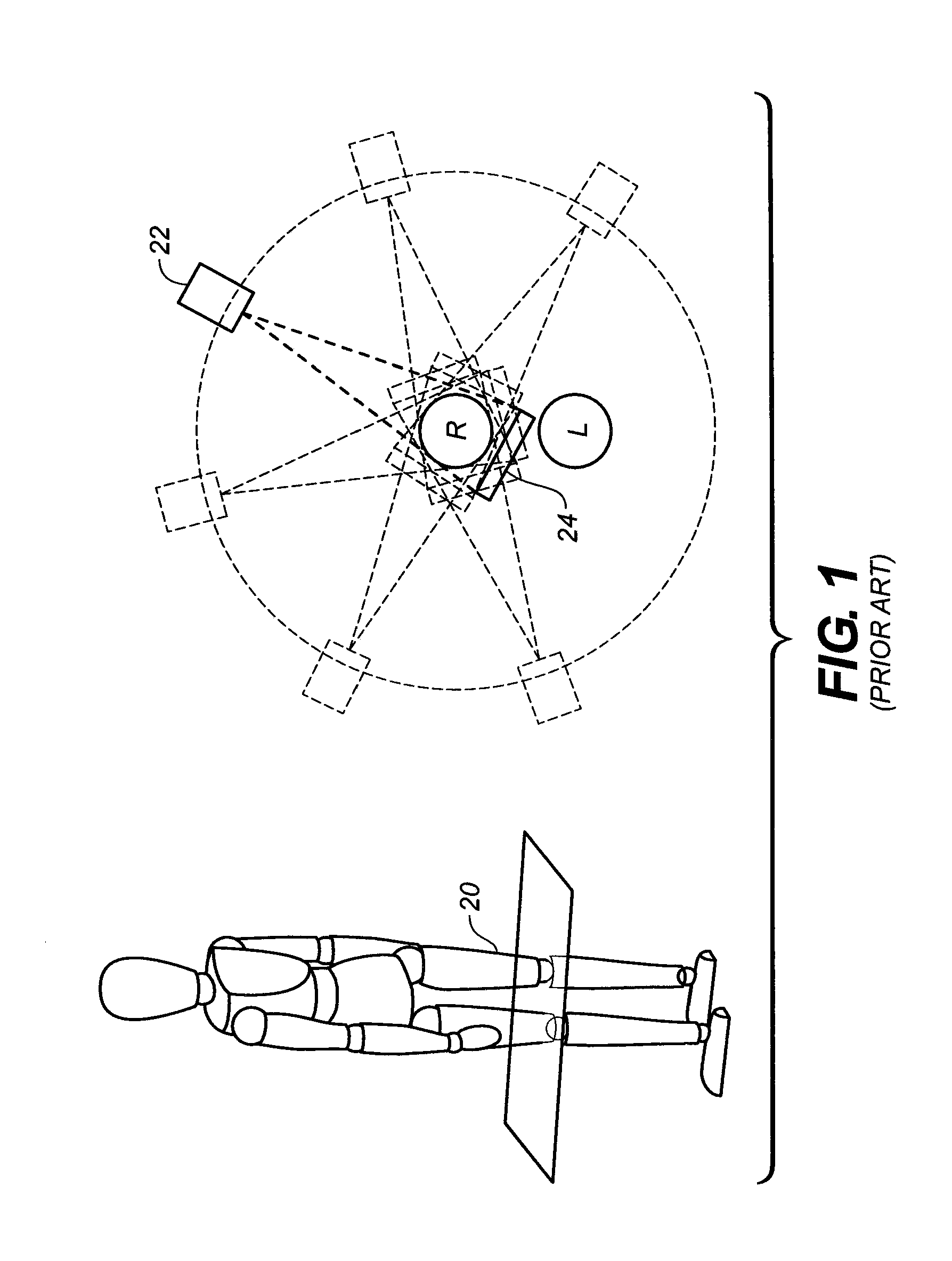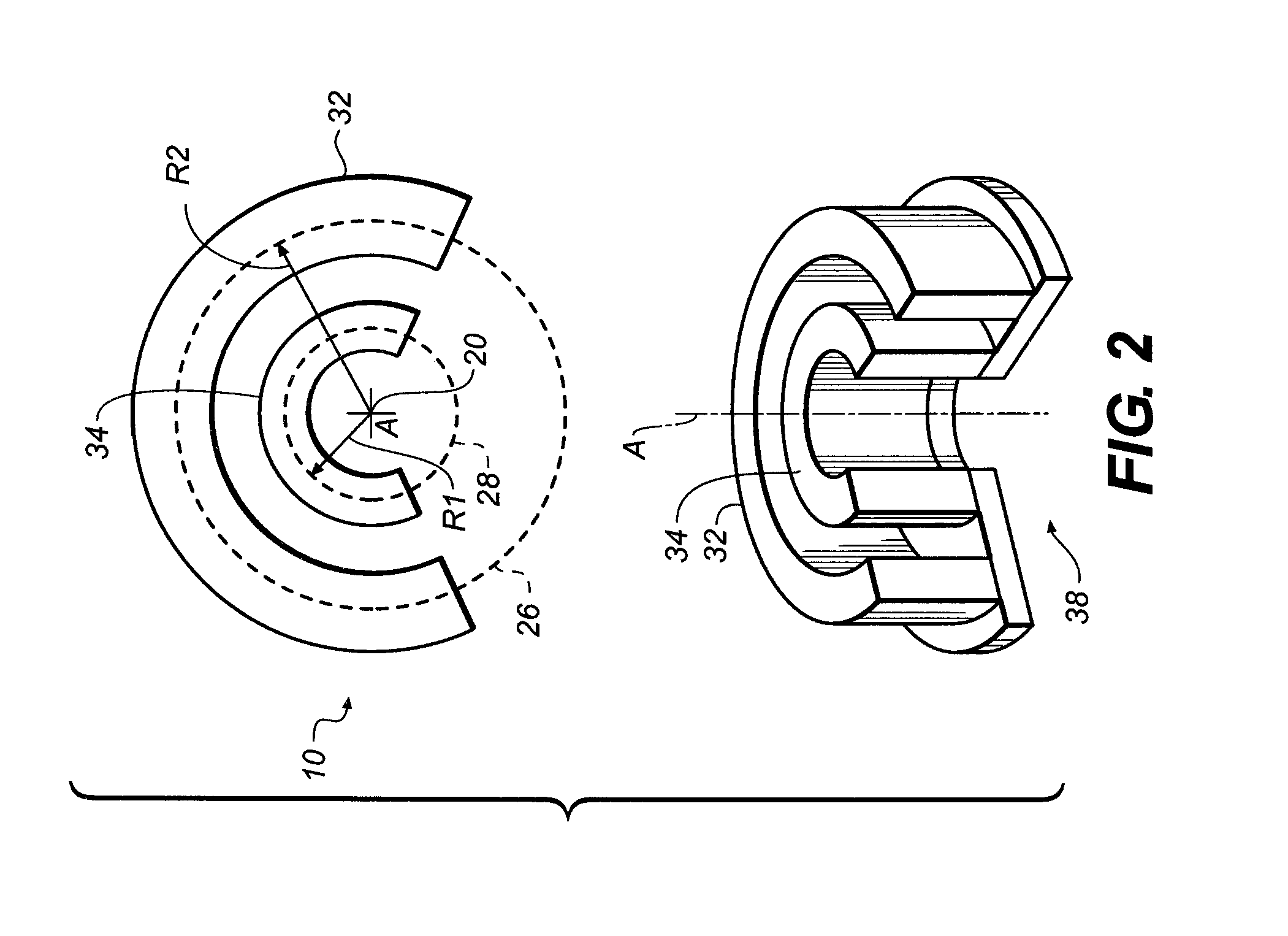Extremity imaging apparatus for cone beam computed tomography
a computed tomography and extremity imaging technology, applied in the field of diagnostic imaging, can solve the problems of difficult to obtain cbct, hampered cbct imaging of legs, arms, other extremities, etc., and achieve the effect of achieving a much more than about 180 degree revolution for knee or other imaging
- Summary
- Abstract
- Description
- Claims
- Application Information
AI Technical Summary
Benefits of technology
Problems solved by technology
Method used
Image
Examples
Embodiment Construction
[0063]The following is a detailed description of the preferred embodiments of the invention, reference being made to the drawings in which the same reference numerals identify the same elements of structure in each of the several figures.
[0064]In extremity imaging, particularly for imaging the lower paired extremities, improvements are needed, including the following:[0065](i) improved placement of the radiation source and detector to provide acceptable radiation levels and image quality throughout the scanning sequence;[0066](ii) system flexibility for imaging at different heights with respect to the rotational axis of the source and detector, including the flexibility to allow imaging with the patient standing or seated comfortably, such as with a foot in an elevated position, for example;[0067](iii) improved patient accessibility, so that the patient does not need to contort, twist, or unduly stress limbs or joints that may have been injured in order to provide images of those bo...
PUM
 Login to View More
Login to View More Abstract
Description
Claims
Application Information
 Login to View More
Login to View More - R&D
- Intellectual Property
- Life Sciences
- Materials
- Tech Scout
- Unparalleled Data Quality
- Higher Quality Content
- 60% Fewer Hallucinations
Browse by: Latest US Patents, China's latest patents, Technical Efficacy Thesaurus, Application Domain, Technology Topic, Popular Technical Reports.
© 2025 PatSnap. All rights reserved.Legal|Privacy policy|Modern Slavery Act Transparency Statement|Sitemap|About US| Contact US: help@patsnap.com



